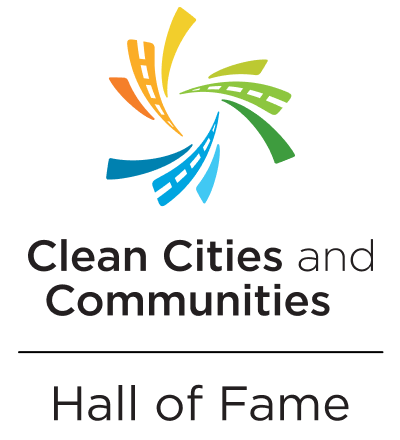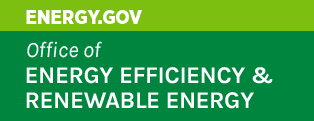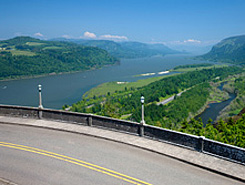Columbia-Willamette Clean Cities
The Columbia-Willamette Clean Cities works with vehicle fleets, fuel providers, community leaders, and other stakeholders to identify community-driven choices that save energy and promote the use of alternative fuels and advanced vehicle technologies in transportation.
General Stats
- Designated: November 10, 1994
- Population: 4,094,164 (based on 2022 Census estimate)
- Area: 31,496 sq. mi.
- Local/Regional Service Area: Oregon counties (including tribal lands): Benton, Clackamas, Clatsop, Columbia, Crook, Deschutes, Hood River, Jefferson, Lane, Lincoln, Linn, Marion, Multnomah, Polk, Tillamook, Wasco, Washington, Yamhill; Washington counties (including tribal lands): Clark, Cowlitz, Skamania, Wahkiakum
Alternative Fueling Stations
Including public and private stations

- Biodiesel (B20 and above): 26
- Electric (charging outlets): 4,154
- Ethanol (E85): 5
- Hydrogen: 1
- Natural Gas: 11
- Propane: 36
Energy Use Impact*
Annual Energy ImpactEmissions Reduced*
Annual Emissions Reduced
Brian Trice

Brian Trice, Executive Director of the Columbia-Willamette and Western Washington Clean Cities Coalitions, is a visionary leader in the alternative fuels industry and a 2023 inductee into the Clean Cities and Communities Hall of Fame. This honor recognizes his outstanding contributions to advancing efficient transportation fuels and technologies. As an ambassador for alternative fuels and a champion for fuel economy, Brian’s exemplary dedication and leadership are paving the way for a energy-efficient transportation future.
In 2011, Brian founded the Green Transportation Summit & Expo, now one of the largest regional alternative fuel transportation conferences in the nation. Initially hosted in a fleet maintenance workshop, the event has grown to attract over 700 attendees and 100 sponsors annually at the Greater Tacoma Convention Center. Brian also co-produced other major alternative fuel transportation events, including the Mobilize California Summit and the West Coast Collaborative Partners Meeting
Brian's contributions extend beyond conferences. At Freightliner dealership, he was the company’s first Alternative Fuels Expert, shaping an emerging industry by developing programs that paved the way for widespread energy-efficient technology adoption. He also led the creation of Oregon’s first Alternative Fuels Program, establishing fleet industry curriculum and certifications at Linn-Benton Community College's Advanced Transportation Technology Center.
With decades of industry knowledge and a deep understanding of fleet operations, Brian collaborates with OEMs, government agencies, and industry stakeholders to implement alternative fuel and technology solutions. His induction into the Clean Cities and Communities Hall of Fame underscores his lasting impact on advancing energy-efficient mobility solutions.
Learn about just some of the projects from Columbia-Willamette Clean Cities. Visit the Columbia-Willamette Clean Cities website for more projects and information.
Projects and Case Studies- Equitable Mobility Powering Opportunities for Workplace Electrification Readiness (EMPOWER)
- Expanding Access to Charging at Home (EACH) Program
- Electric Refrigeration Translates Fuel Burn into Savings for Nonprofit
- Oregon Celebrates 1,400 Miles of Electric Highways
- Oregon Boosts EV Adoption Through Popular Electric Vehicle Events

